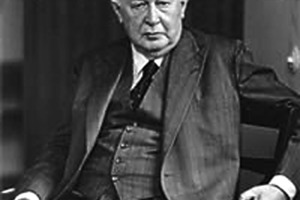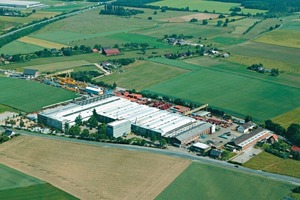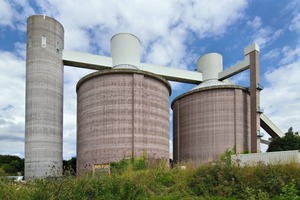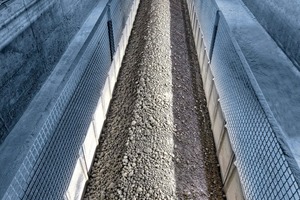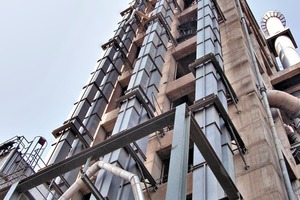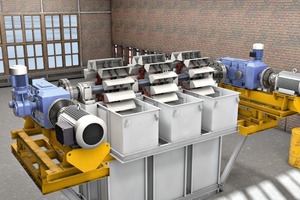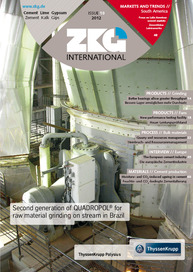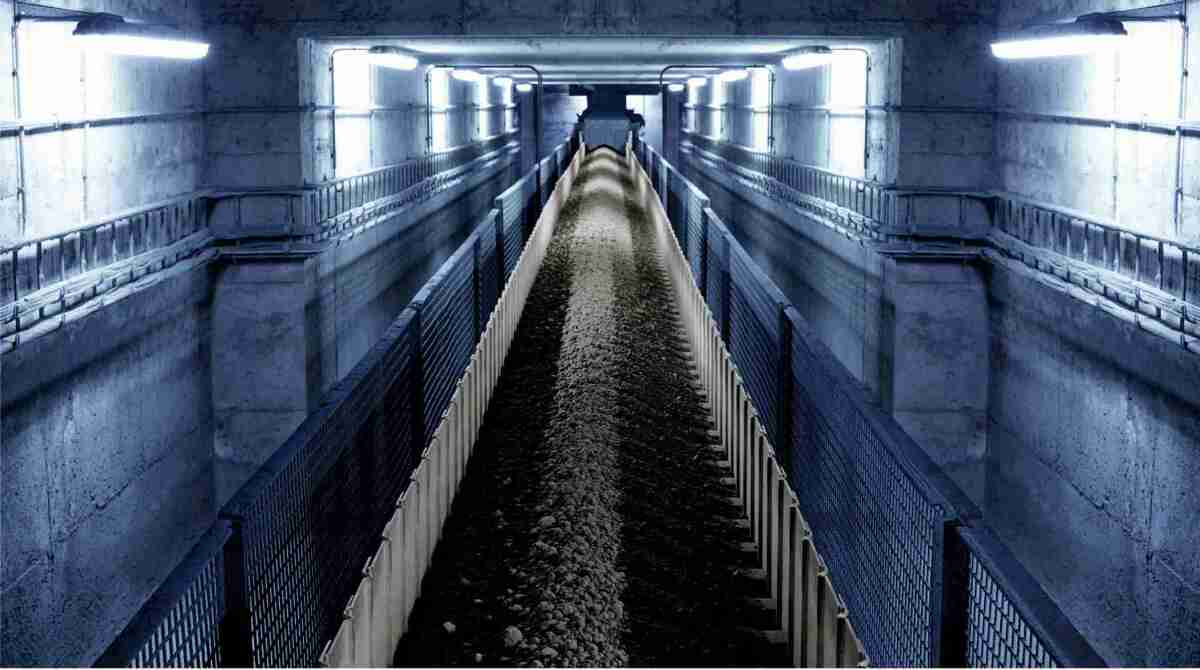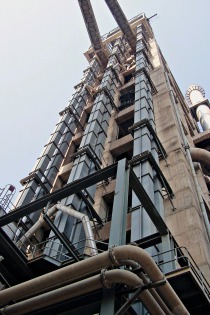90 years of innovative solutions for demanding bulk materials
Since the first patent for a waggon tippler for train unloading in 1922, many further patents have underpinned the claim that the founder developed new and innovative transport and handling solutions. This is still a robust constituent of the company’s philosophy today. An inventor’s spirit and courage to try out new things are not sufficient to be able to confirm again and again the success over so many years. An additional ability is vitally important in order to be able to manufacture successful products from good technical solutions. Franz-Walter Aumund, third-generation company boss hits the nail on the head: “The question is not what is technically possible. Whoever wants to maintain their position in the market must ask themselves how they can achieve the best result for the customer.”
The principle that the material and its properties – as well as the application and its confirmed environment determine the choice of conveyor – also determines the customer relationship as well as the work in the research and development department. For already at this stage the points are set for the later economy of the entire installation. The consequence of this principle is pleasing in every respect: Customers receive equipment which is matched to each particular task and runs both reliably and long-term. Aumund profits from the resultant reputation of being a supplier of very reliable and capable machinery. And similarly in widely varying industrial sectors.
Originating from conveying technology for the German mining industry, the company rapidly developed a series of different conveying installations which are employed nowadays in the cement industry, the metallurgical industies, in power plants, in mining, but also in many other fields in which large volumes of bulk materials need to be continuously conveyed (Fig. 3). The pan conveyors (Fig. 4) have made a special name for themselves for example. They are employed in hot material conveying in the cement or metal industry (clinker, sinter, pellets etc.) but also in the conveying of extremely abrasive materials. The same applies to Aumund heavy-duty apron feeders which are used in mining or in quarries for the loading of crushers.
Apart from horizontal conveying up to 60 degrees angle of inclination, vertical conveying also plays an important role (Fig. 5). Aumund belt bucket elevators nowadays achieve conveying capacities of up to 1500 t/h, conveying heights of up to 160 m and, thanks to a special design which has most recently been introduced to the market, they are also suitable for conveying of coarse grain bulk materials. A special design also makes them reliably employable with ambient temperatures of up to 130 °C. Whenever preheater towers on modern cement plants are especially tall Aumund bucket elevators are frequently encountered.
In the case of chain bucket elevators, Aumund has ploughed its own furrow in two respects which have been demonstrating an impressive performance for many years: In contrast to other suppliers the experts from Rheinberg choose a design with a central chain. The chain, developed by Aumund, is available in different variants. In the strongest variant the breaking strength of the chain (Aumund type AU19) is up to a breaking force of 2400 kN. This model is employed in the new triple chain bucket elevator (Aumund type BW-T) which can handle conveying capacities of up to 4000 t/h (Fig. 6).
The load capacity limit, here Aumund is sure, has not yet been reached. New processes and materials will continue to demand suitable equipment which meets varying needs. The 90 years of company history which lie behind us also provide in this respect a good reason to celebrate. For success was always a faithful companion. What began in an old workshop in Rheinberg many years ago is today an operation with over 400 employees worldwide, with its own production and worldwide service locations.
The strategically important acquisitions since the turn of the century also fit in well here. The management team attached great value to the extension of the product base. The company B&W Mechnical Handling Ltd. from England and Schade Lagertechnik GmbH were two companies which were incorporated into the group covering important fields in conveying and storage technology. B&W specialises for example in mobile conveying installations for ports and terminals and Schade focuses on the most up to date stockyard technology which above all is employed in power plants and anywhere where large volumes of bulk materials need to be stored and handled.
The company is well equipped for the future. The operative managing directorship has been recently handed over by Franz-Walter Aumund to Dr. Volker Brandenburg and to Joerg Hoffmann, who was previously in the same position at Schade. In the overseas subsidiaries in Brazil, China, France, India, Hong Kong and USA as well as in the product companies Aumund, B&W and Schade a new management team has been formed which determinedly pursues the same goals. Franz-Walter Aumund: “If we remain true to our principles and prioritise customer usability, quality and innovation then we all have good reason to look forward to what the next 90 years will bring.”

